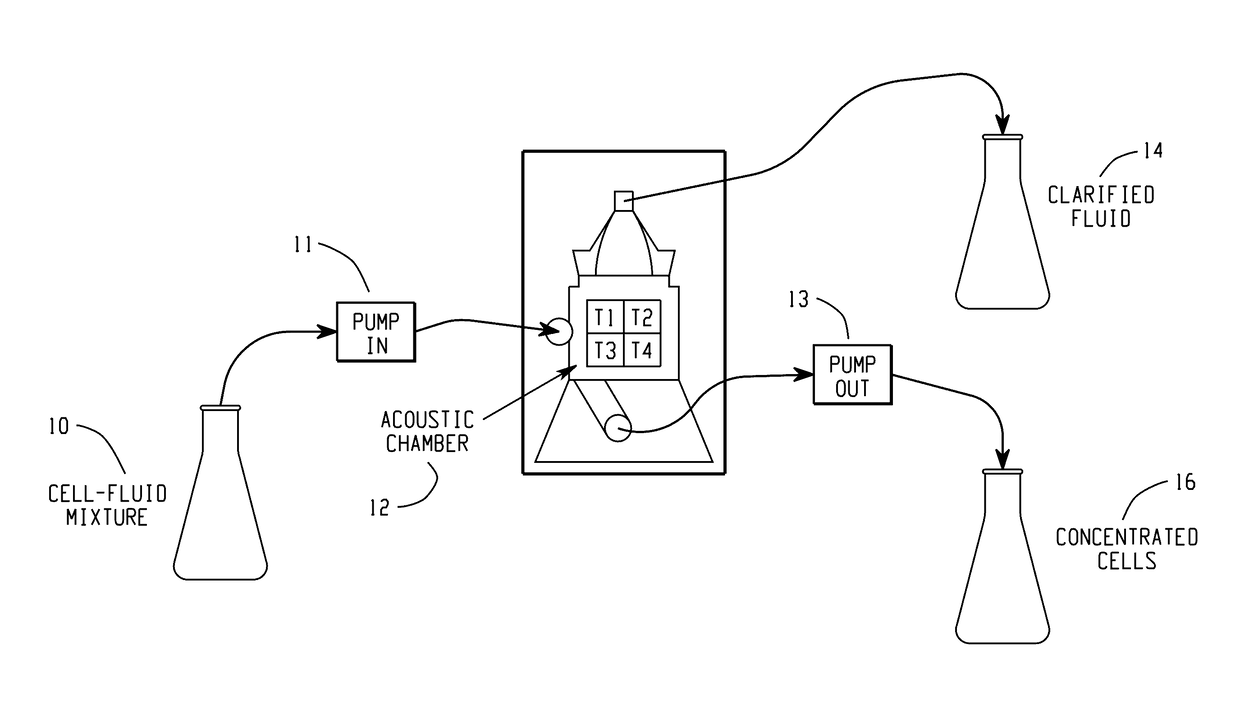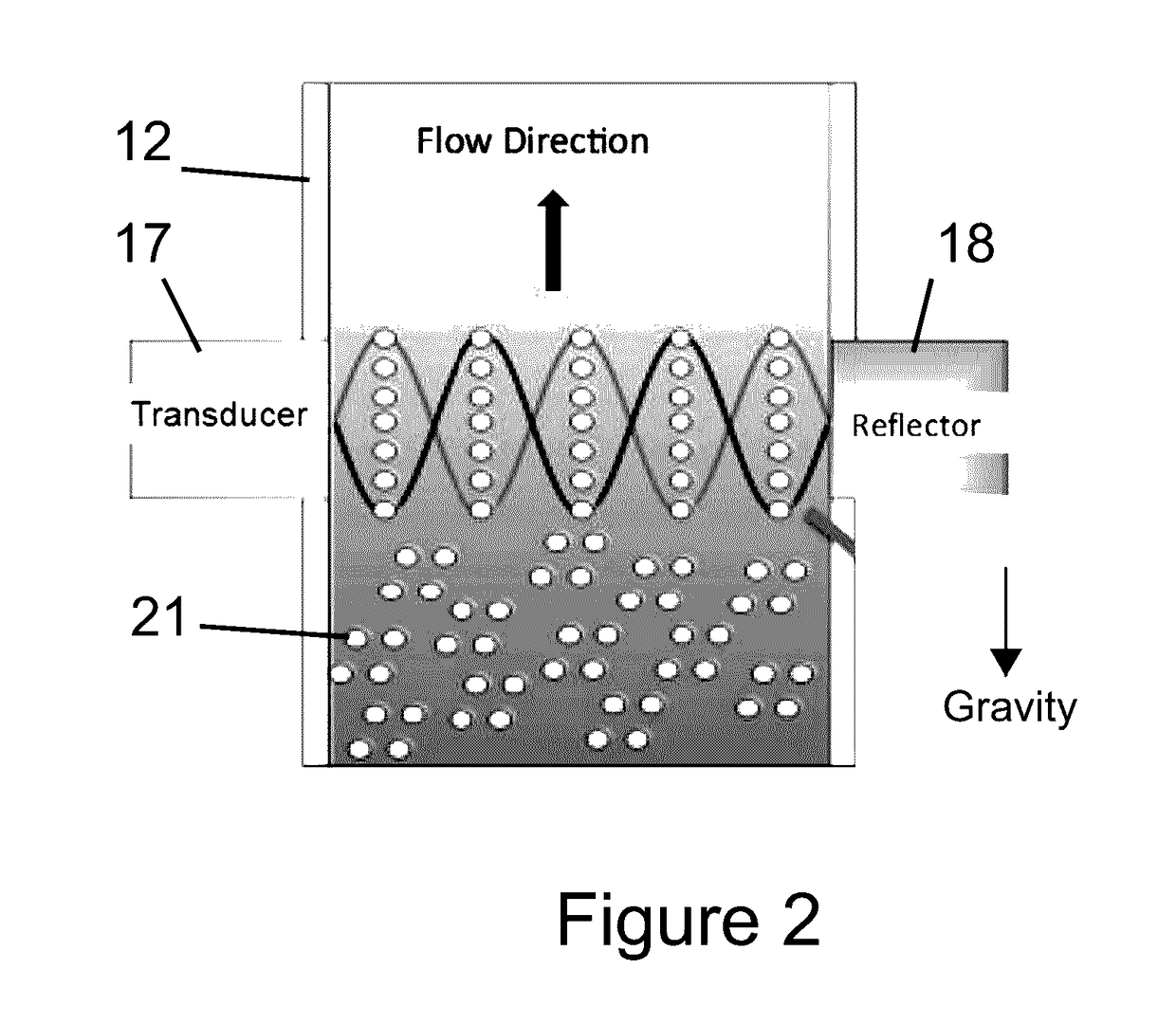Methods and apparatus for particle aggregation using acoustic standing waves
a technology of acoustic standing waves and particle aggregation, which is applied in the direction of mechanical vibration separation, separation process, and treatment involving filtration, etc., can solve the problems of constructive/destructive interference between acoustic waves and the vertical flow path reduces velocity non-uniformities, so as to improve the efficiency of the acoustophoretic system, reduce velocity non-uniformities, and improve the separation of particles/secondary fluid
- Summary
- Abstract
- Description
- Claims
- Application Information
AI Technical Summary
Benefits of technology
Problems solved by technology
Method used
Image
Examples
Embodiment Construction
[0069]The present disclosure may be understood more readily by reference to the following detailed description of desired embodiments and the examples included therein. In the following specification and the claims which follow, reference will be made to a number of terms which shall be defined to have the following meanings.
[0070]Although specific terms are used in the following description for the sake of clarity, these terms are intended to refer to the particular structure of the embodiments selected for illustration in the drawings, and are not intended to define or limit the scope of the disclosure. In the drawings and the following description below, it is to be understood that like numeric designations refer to components of like function.
[0071]The singular forms “a,”“an,” and “the” include plural referents unless the context clearly dictates otherwise.
[0072]The term “comprising” is used herein as requiring the presence of the named component and allowing the presence of oth...
PUM
| Property | Measurement | Unit |
|---|---|---|
| height | aaaaa | aaaaa |
| height | aaaaa | aaaaa |
| height | aaaaa | aaaaa |
Abstract
Description
Claims
Application Information
 Login to View More
Login to View More - R&D
- Intellectual Property
- Life Sciences
- Materials
- Tech Scout
- Unparalleled Data Quality
- Higher Quality Content
- 60% Fewer Hallucinations
Browse by: Latest US Patents, China's latest patents, Technical Efficacy Thesaurus, Application Domain, Technology Topic, Popular Technical Reports.
© 2025 PatSnap. All rights reserved.Legal|Privacy policy|Modern Slavery Act Transparency Statement|Sitemap|About US| Contact US: help@patsnap.com



